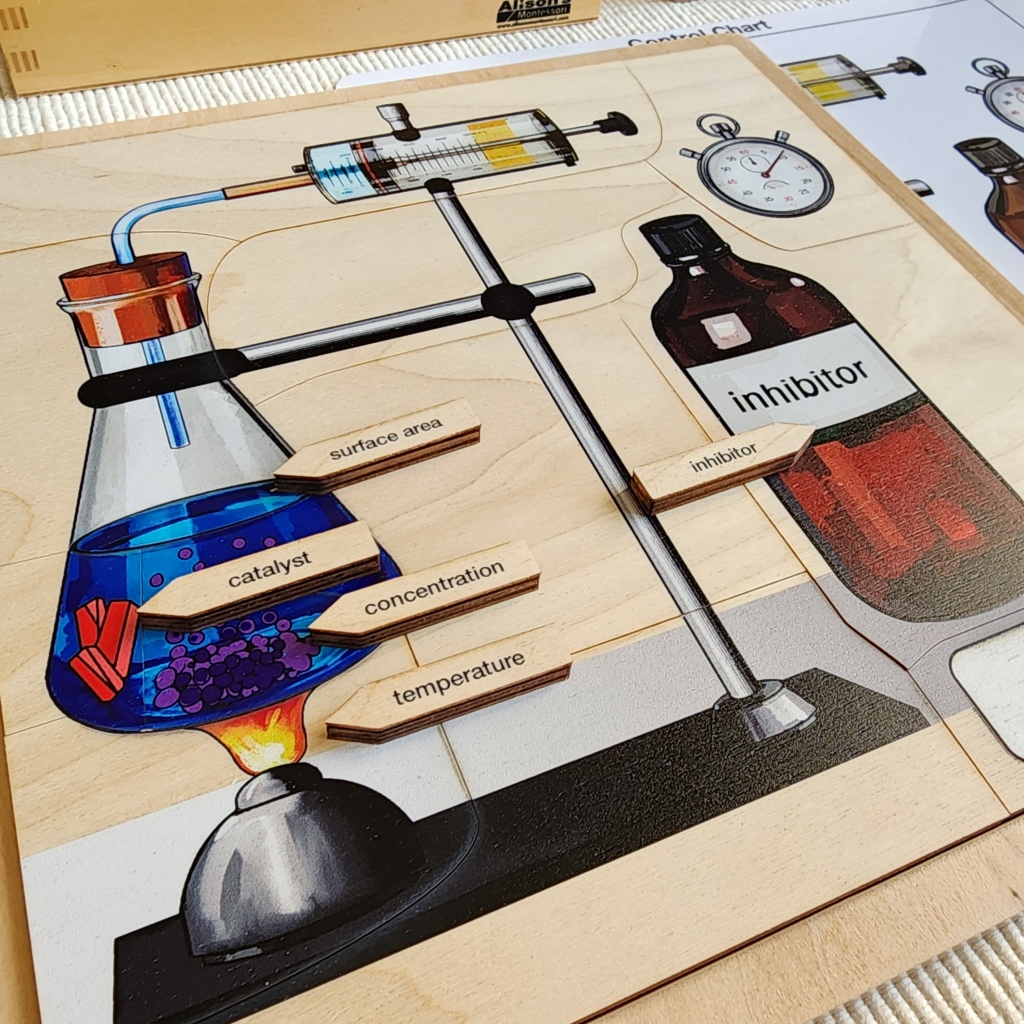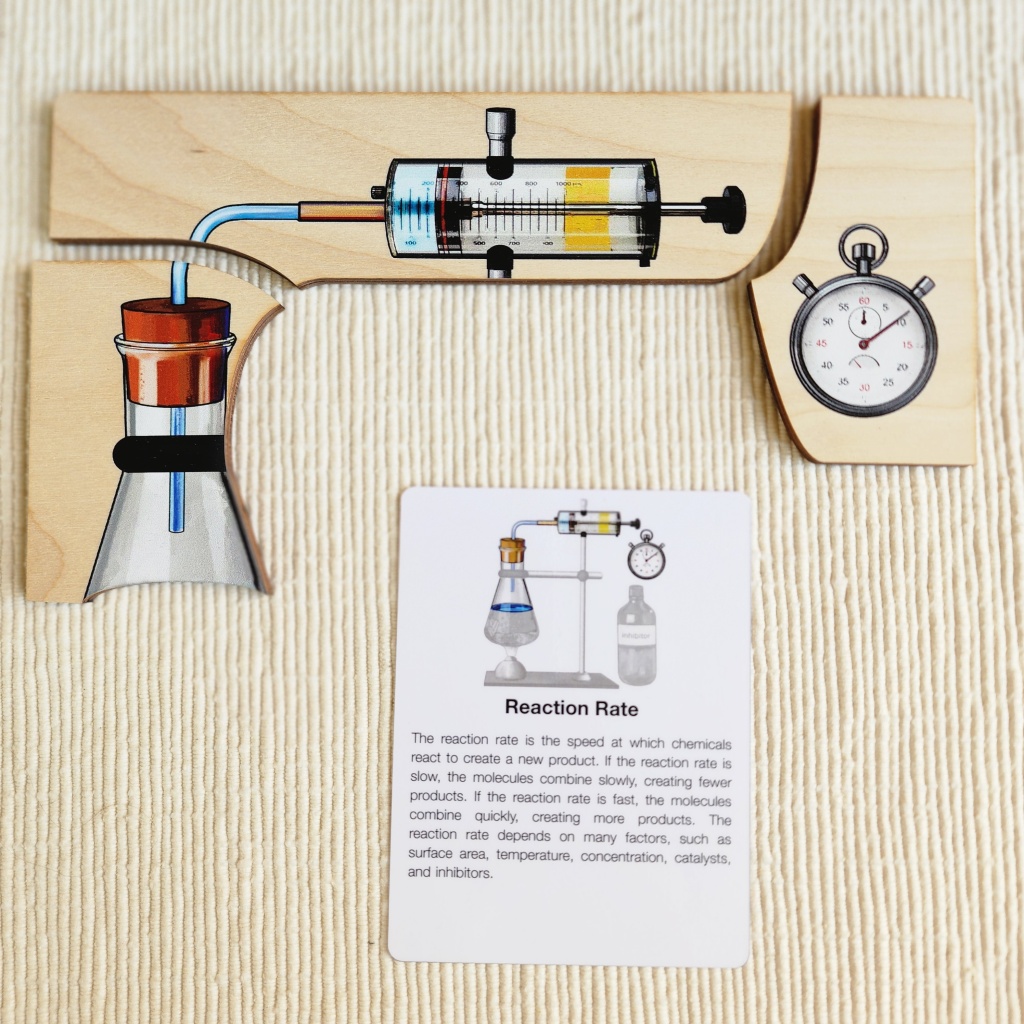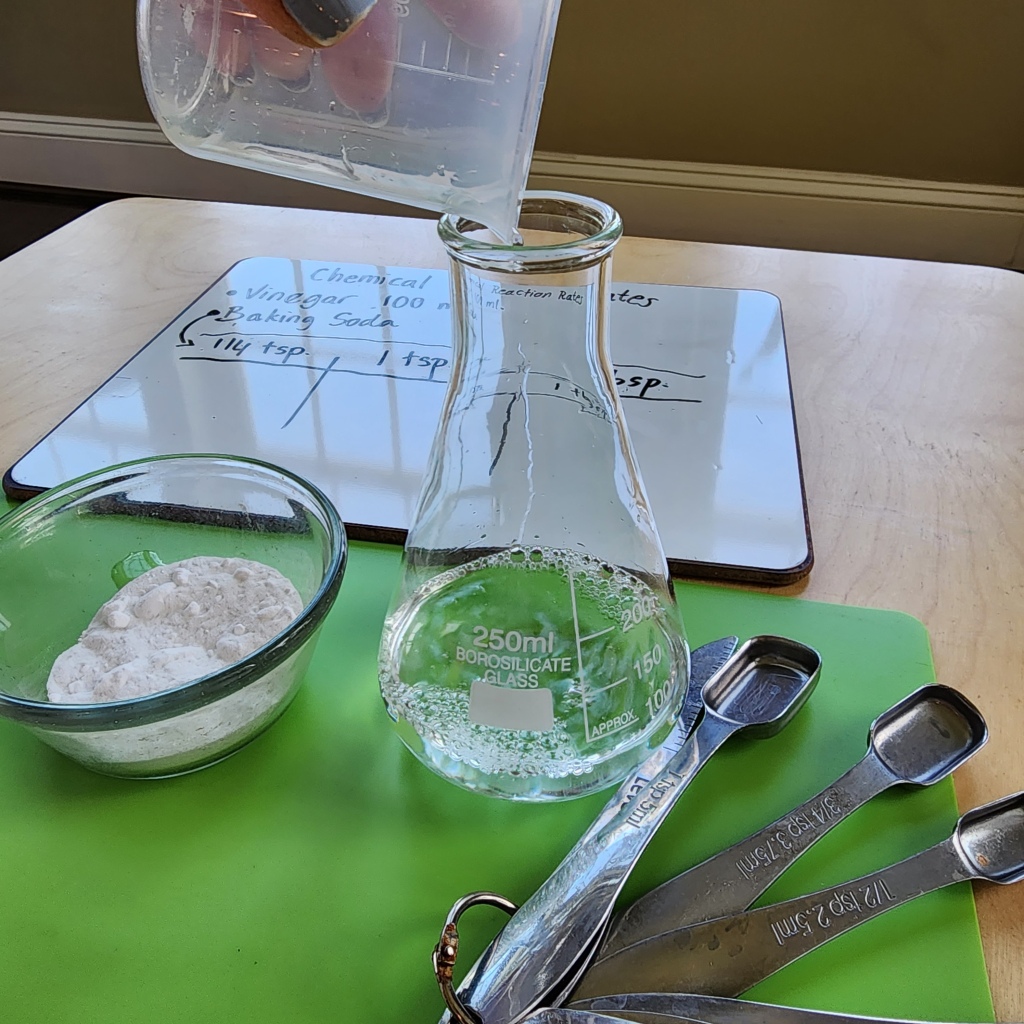Chemical reaction rates are a complex topic, but they can be made fun and engaging for kids using Alison’s Montessori new chemistry materials! In this blog post, I will explain how to use their new puzzle with research cards and task cards to teach your kids about chemical reaction rates. I will also include a fun and easy experiment that I did with my kids at home.
Materials
- Chemical Reaction Rates – Complete Set
- Chemical Reaction Rates Supplement Materials (if on a budget)
- Experiment Tools (flask, set of measuring spoons, measuring cups, vinegar, baking soda, stopwatch, recording chart, journal)


Purpose of Studying Chemical Reactions
The rate of a chemical reaction is a measure of how fast the reactants are converted into products. By understanding the factors that affect reaction rates, scientists can better understand how chemical reactions work. Therefore, the study of chemical reaction rates is an important part of chemistry exploration. It allows children to understand how chemical reactions work, design and optimize chemical processes, predict the outcome of chemical reactions and apply chemical reaction rates in the real world as in making pudding, slime, and elephant toothpaste!
Puzzle, Research Cards & Task Cards
The puzzle can be your first introduction to the topic. The puzzle is appealing and safe; therefore, learners will focus on different parts at their own pace. The puzzle can be taken apart to isolate parts. You can invite your learners to put the puzzle back together to keep their interest high. Use the wooden arrows to label the parts. As you label the parts, use the research cards to explain each component of a chemical reaction rate process.
The research cards contain information about different types of reactions, the factors that affect reaction rates, and the applications of chemicals that serve as inhibitors or catalysts. Kids can read the cards and learn about the different aspects of chemical reaction rates later again as the materials are permanently available on the shelf.
The task cards contain different activities that kids can do, such as designing experiments and comparing processes. Kids can complete the task cards and record their answers in a science notebook.
Experiment



You could start with a simple experiment such as baking soda and vinegar and move to making elephant toothpaste to demonstrate the power of catalysts! For now, all you need is vinegar and baking soda.
- 100 mL of vinegar (x 3)
- 1/4, 1/2 teaspoon, 1tablespoon of baking soda
- Graduated cylinder
- Stopwatch
- Safety goggles
Procedure
- Put on safety goggles.
- Pour 100 ml. of vinegar into the graduated cylinder.
- Add 1/4 teaspoon of baking soda to the vinegar solution.
- Start the stopwatch.
- Observe the reaction and time how long it takes for a visible bubble to form.
- Record your results!
- Repeat with 1/2 teaspoon of baking soda and 100 ml. of vinegar, etc.
Don’t let chemistry be a thing for older kids! We use chemical reactions in everyday life. This topic is fascinating and absolutely approachable in the late elementary years. Make sure to leave the materials at the disposition of children so that they can keep this knowledge sharp.
